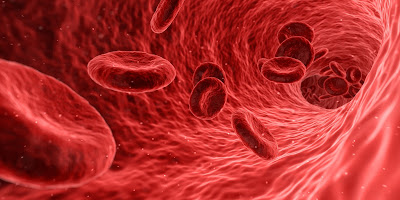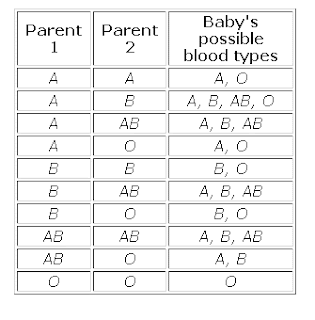Blood Group Genetics- Dracula's basic lesson to know
"Blood as Power." This is the ideology of Mr.Dracula. Let us call him Drac. Finally, he found a prey and was about to hunt. But wait here.
Do you think Drac is not aware of blood type genetics? He must just be pretending as if he is a dumb...
Blood is a fluid that delivers necessary substances such as nutrients and oxygen to the cells and transports metabolic waste products away from the cells. In vertebrates, it is composed of blood cells suspended in blood plasma.
Every drop of blood contains erythrocytes (Red Blood Cells), which contain a red pigment called haemoglobin. When haemoglobin carry oxygen, it forms oxyhaemoglobin. The blood also contains leukocytes (White Blood Cells), which help in fighting infections. Platelets are tiny blood cells that help the body form clots to stop bleeding. If a blood vessel gets damaged, it sends out signals that are picked up by platelets. These platelets rush to the target site and clot to repair the damage.
Our blood contains antigens, which are proteins and sugars that sit on RBC and decide the blood type. There are at least 33 blood typing systems, only two are used worldwide. The two systems are:
Do you think Drac is not aware of blood type genetics? He must just be pretending as if he is a dumb...
Blood is a fluid that delivers necessary substances such as nutrients and oxygen to the cells and transports metabolic waste products away from the cells. In vertebrates, it is composed of blood cells suspended in blood plasma.
Every drop of blood contains erythrocytes (Red Blood Cells), which contain a red pigment called haemoglobin. When haemoglobin carry oxygen, it forms oxyhaemoglobin. The blood also contains leukocytes (White Blood Cells), which help in fighting infections. Platelets are tiny blood cells that help the body form clots to stop bleeding. If a blood vessel gets damaged, it sends out signals that are picked up by platelets. These platelets rush to the target site and clot to repair the damage.
Our blood contains antigens, which are proteins and sugars that sit on RBC and decide the blood type. There are at least 33 blood typing systems, only two are used worldwide. The two systems are:
- ABO system
- Rh system
ABO system
This blood group system is base on the properties of RBC as determined by the presence/absence of antigens A and B, which are carried on the surface of the RBC.
There are four main blood group types based on ABO system:
- Blood group A: Antigen A is carried on the surface of the RBC.
- Blood group B: Antigen B is carried on the surface of the RBC.
- Blood group O: Neither antigen A nor antigen B is carried on the surface of the RBC.
- Blood group AB: Both antigen A and B are carried on the surface of the RBC.
As blood group O do not have any antigens, it can be safely given to any other group. That is why blood group O is called the 'universal blood donor'.
Blood group AB is considered as the 'universal recipient', as they have both A and B antigens on the RBC and thus, they do not have antibodies against A or B antigen cells, so they can receive blood from any blood group.
Rh system
RBCs have another antigen, a protein known as the D antigen. If this D antigen is present, the blood group is RhD positive. If this antigen is absent, the blood group is RhD negative.
- A RhD positive (A+)
- A RhD negative (A-)
- B RhD positive (B+)
- B RhD negative (B-)
- O RhD positive (O+)
- O RhD negative (O-)
- AB RhD positive (AB+)
- AB RhD negative (AB-)
Testing Blood Group
To test your blood group, your RBCs are mixed with different antibody solutions. If the antibody solution and the blood group are same, it will clump together. For example, the solution contains anti-A antibodies and the blood group has B antigens on the RBC, then it will clump together.
If the blood does not react to any of the anti-A or anti-B antibodies, the blood group O.
Can the mother's blood group affect the baby?
Pregnant women are given a blood group test because if the mother is RhD negative and the child has inherited RhD positive blood from the father, it can lead to Rhesus disease. The mother must have been sensitized to RhD positive blood in her first pregnancy.
In the next pregnancy, the mother's body responds to RhD positive blood by releasing antibodies that find the foreign blood cells and slowly destroy them, which affects the foetus when the antibodies cross the placenta. The antibodies, sometimes, continue attacking the RBCs of the baby for a few months even after the birth.
No fear! Rhesus disease is rare these days since it can be prevented using medication called anti-D immunoglobulin.
 |
| A clear picture about donating and receiving blood |





Comments
Post a Comment